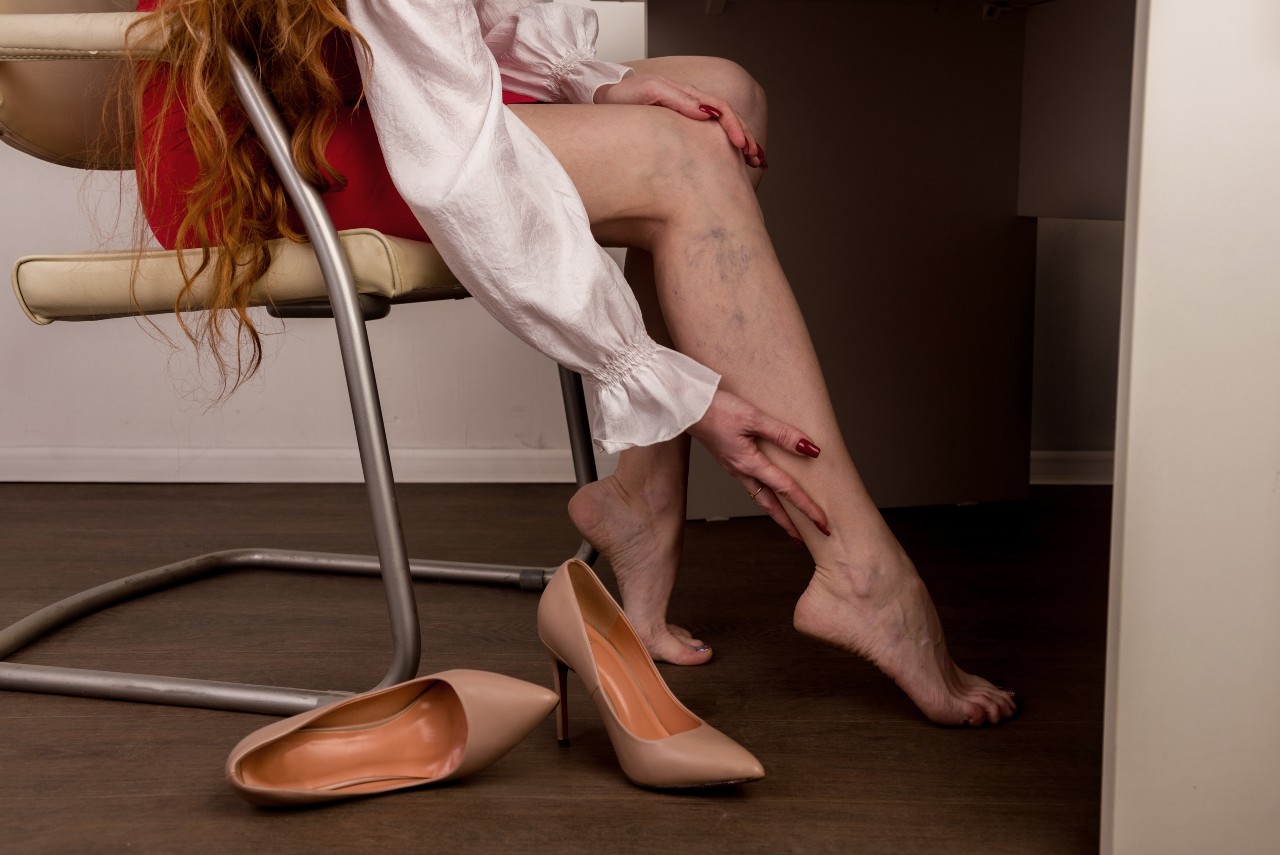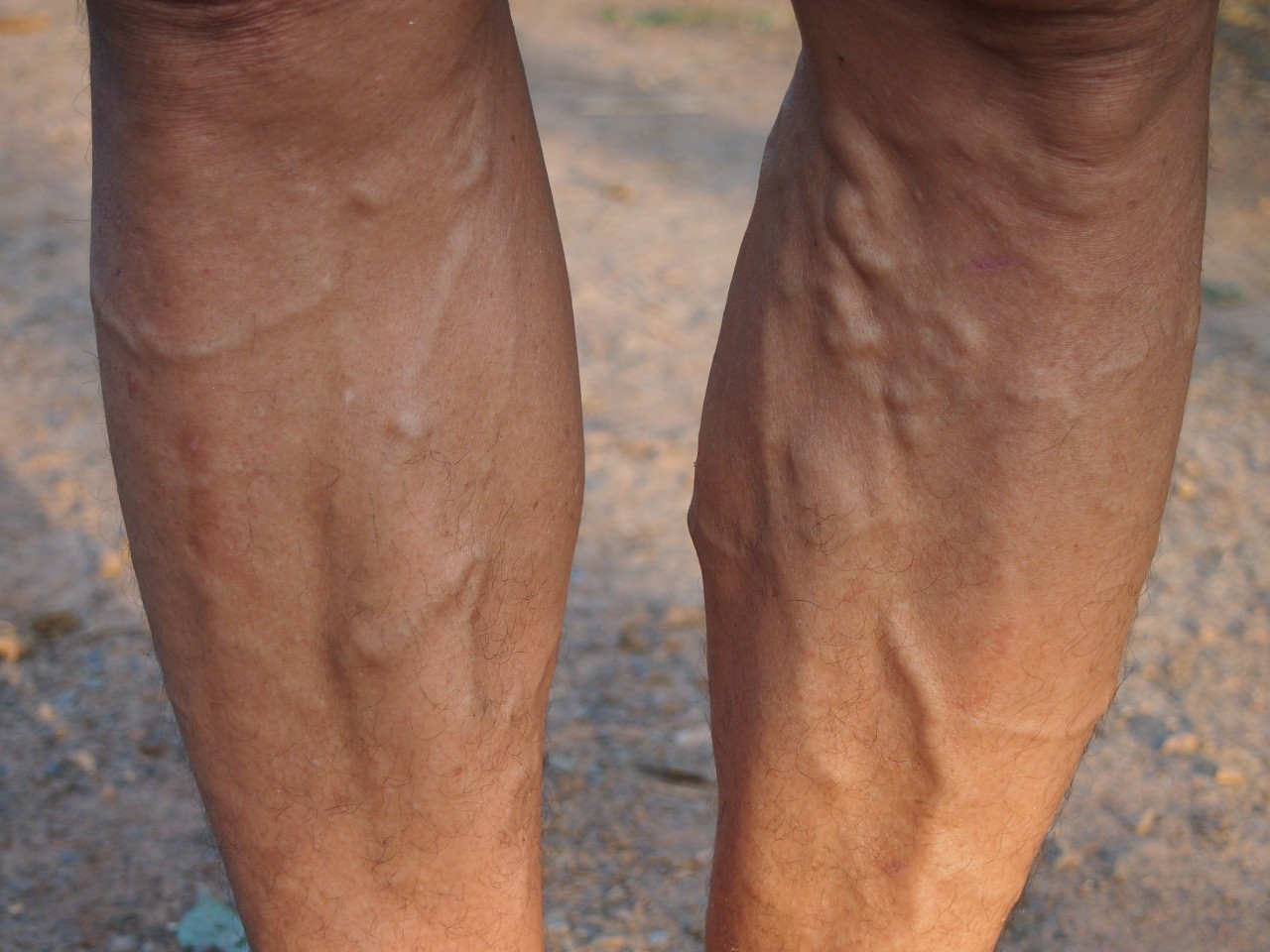Veins transport oxygen, nutrients, and blood to various parts of the body. Inside them are valves that ensure one-way transport toward the heart. However, when these don’t function, blood flows backward into the lower part of the vein, resulting in blood pooling.
Blood pooling exerts pressure on vein walls and weakens them, enlarging the veins underneath the skin. Commonly known as varicose veins, enlarged veins appear as twisted red or blue cords on the thighs, calves, and ankles.
Vein diseases afflict 30% of the adult population. While it’s often associated with women of child-bearing age or those undergoing menopause, men can also suffer from vein diseases when risk factors are present. Hence, at some point in their lives, both men and women can suffer from this due to age, occupation, lifestyle, obesity, and heredity.
With lifestyle changes, varicose veins are often painless and may go away in time. However, complications may arise in the form of blood clots, leg ulcers, numbness, changes in leg color, vein infections, May-Thurner Syndrome, pulmonary embolism, and even death.
Thus, it’s essential to manage vein disease symptoms early on to prevent complications from occurring. Home remedies and non-invasive procedures may alleviate pain, while surgery can remove unpleasant varicose veins and their impediments.
Table of Contents
Vein Disease in Women

Women are more likely to have vein disease because of the hormone, progesterone. Increased female hormone levels can weaken vein valves, cause blood to pool, and further expand the veins.
Varicose veins in the inner thigh, lower pelvic area, and buttocks are common during pregnancy. They occur as a response to the pressure on the limbs from carrying the growing fetus. Pregnancy-related varicose disappear three to six months after birth, although they may persist with subsequent pregnancies. In addition, a specialist in varicose veins in Phoenix mentions that, “Taking hormone replacement therapies as treatments for hot flashes and osteoporosis can also increase varicose veins in older women.”
Varicose veins in women are often painless but are rather unsightly. But there are times when they can cause swelling, leg discoloration, or ulcers. If this happens, it may be best to find a suitable treatment. If you happen to be in New York and require some advice on managing vein disease, you can go here for consultation and treatment.
Vein Disease in Men

Approximately 45% of all men can have varicose veins. Certain conditions, such as leg trauma, paralysis, and medication can cause leg veins to appear. Due to aesthetic concerns, women may be more affected by varicose veins compared to men.
However, vein disease in men also manifests as discoloration of the skin, bleeding, skin ulcers, numbness, and aching in lower limbs. It can also underlie serious diseases as blood clots can cause heart attack, pulmonary embolism, and stroke.
Common Risk Factors
While women are more likely to have vein disease than men, several factors are common to both sexes. These include:
Age
Men and women are prone to various vein diseases as they age. According to the Cleveland Clinic, it’s more common in adults aged 50 and over. This is because age weakens the veins and calf muscles, which help send blood back to the heart when walking.
Heredity
Men and women who have a history of vein disease in their family are more likely to have the disease. A study cited in Women’s Health shows that more than half of women with varicose veins had parents with the same condition. The same holds for men who may have inherited the disease.
Those who are predisposed to vein disease can manage their symptoms by having an active and healthy lifestyle early on in life. Thus, exercise and a healthy diet are crucial to maintaining healthy veins despite heredity issues.
Lifestyle
Sitting for long periods due to work or inactivity can weaken blood circulation. It can also prevent blood from going back to the heart. Standing for hours on end can also put extra force on the legs and the force of gravity can impact the way veins work.
Men and women whose jobs require prolonged sitting or standing are prone to varicose and other vein diseases. Those who are at risk need to walk frequently and use compression socks during the day to relieve pressure on their legs and veins.
Obesity
Research shows that men and women who are obese have more chances of suffering from vein disease rather than those with a healthy weight. Excess weight on the abdomen can exert pressure on the leg veins, while increased fatty and fibrous tissues can also slow blood circulation and cause varicose veins to form.
Thus, men and women need to alter their lifestyle and opt for fiber-rich foods to help manage their weight. Eating foods with a high level of dietary fiber can also eliminate hemorrhoids and varicose veins since stool can easily pass. Aside from this, fiber can also improve digestion, helping control blood sugar levels and manage obesity.
Smoking
Studies on the impact of smoking on veins show that smoking causes a temporary narrowing of the veins. However, consistent smoking can increase carbon monoxide and tar that inflame and injure veins. Inflammation, then, triggers the release of free radicals as a response, causing further inflammation to vein walls.
Older women who smoke have higher risks of developing vein disease than younger women and men of the same age. Middle-aged males with known risk factors can also develop varicose veins. This association then entails a necessity to quit smoking as soon as possible and replace the habit with cardiovascular exercise to reverse the effects of smoking.
Treatment For Men And Women
Home care methods serve as the initial treatment for vein disease. Quitting smoking and shifting to an active lifestyle that features exercise and a high-fiber diet may also help manage risks associated with varicose veins. Wearing compression stockings and elevating feet at nighttime may alleviate pain or throbbing associated with varicose veins, too.
Cases of more severe vein disease require medical consultation and treatments, such as sclerotherapy or laser surgery.
Conclusion
Men and women share several factors that contribute to the occurrence of vein disease. Age, heredity, lifestyle, smoking, and obesity may increase varicose veins’ appearance in men and women. Studies have shown that women are more susceptible to the disease than men due to pregnancy and menopause.
Managing the symptoms of this illness through self-care remedies and medical treatments apply to both men and women. These treatments may alleviate pain and decrease risks for a more severe disease for men and women.




